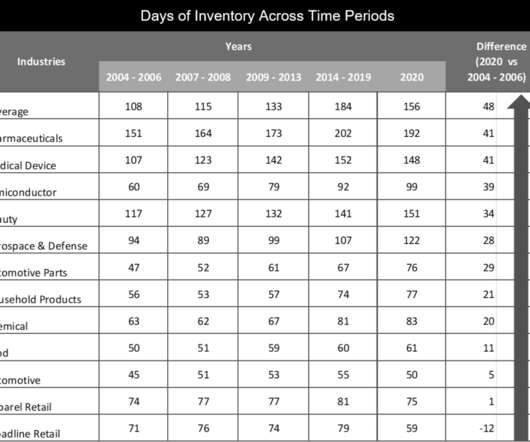How We Stubbed Our Toe in The Evolution of S&OP
Supply Chain Shaman
FEBRUARY 14, 2022
I wrote my first report on Sales and Operations Planning (S&OP) while sitting on the floor in the Atlanta airport in 2005 when I was an AMR Research analyst. Sales and Operations Maturity Model from 2005-2008. Industries carried on average 32 days more inventory in 2020 than in 2007. (I Let me explain. Mistake #5.
















Let's personalize your content